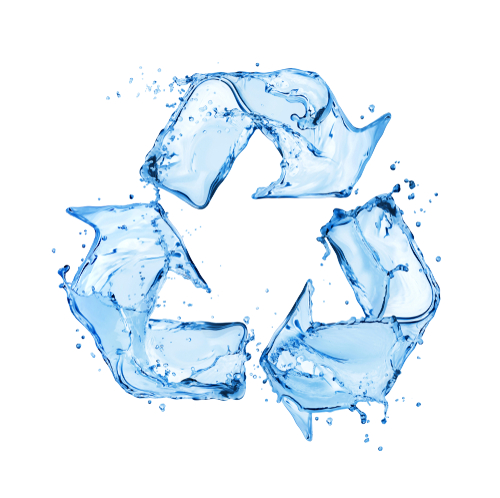What is the impact of using a reclaimed water irrigation system on fertilizer?
The key to growing healthy plants is finding the right balance of environmental conditions and inputs, especially for water-soluble fertilizers. The appropriate fertilizer and an adequate water supply are vital to a successful crop. This is true whether you are growing roses, tomatoes, cannabis, or any other plant. .
The management of irrigation water is a top concern of ornamental growers who are affected by freshwater depletion as well as the introduction of agricultural water regulations. This has caused many to transition to capturing and recirculating the run-off nutrient solution within the same production system, or a closed-loop system.
As a water-soluble fertilizer provider, one of the top questions we get about switching to a reclaimed water irrigation system is what is the potential impact on my water-soluble fertilizer use? We’ll explore this topic below.
Why capture runoff in a recycled water irrigation system?
Many are making the shift to reclaimed water for a variety of reasons and outcomes. Ultimately, it’s a method of reducing the use of natural water supplies. Some reasons for converting to a recycled water source include:
- Pollution prevention
- Reduced water costs
- Regulatory compliance
- Stormwater control
Recycling irrigation water can lead to a modest decrease in fertilizer costs as nutrients are recycled. It also results in flexibility in managing different forms of fertilizers and scheduling pesticide applications.

The impact of reclaimed water on fertilizer
Reusing reclaimed water for irrigation can introduce complications due to its nutrient and plant pathogen contents compared to a fresh irrigation water source. This can affect how much fertilizer is needed between each cycle.
Recirculated nutrient solutions will carry the remaining nutrients leached from the substrate, along with plant pathogen and residual agrochemicals. Nutrients can accumulate in imbalanced levels, affecting ion availability. Certain plant pathogen spores can easily spread from plant to plant and across production zones. Depending on the application, varying levels of agrochemicals can leach into the collected runoff. Each factor must be considered when converting to a reclaimed irrigation system.
The most effective way to manage nutrient levels is to reduce the amount of solution that needs to be collected treated and reused. This means increasing the accuracy of your feeding to ensure that there is as minimal runoff as possible, while not affecting yields. Ideally, this means a reduction in fertilizer use and waste.
The use of varying degrees of filtration will help to address the remaining concerns of reclaimed water use.
Effective fertilizer management with a reclaimed water source
To ensure appropriate fertilizer use, constant solution monitoring is required in a reclaimed water irrigation system. The amount of nutrients remaining in the captured runoff may vary depending on the growth stage, weather conditions, external crop stressors, etc.
Unfavourable characteristics of the initial water source will also be magnified. Each will impact how much fertilizer should be applied at each cycle.
Growers should have their captured runoff tested for nutrient content, pH, salinity, bicarbonates, and EC.
The potential benefits of reclaimed water use outweigh the challenges. In addition to conserving fresh water, it can change how you use fertilizer. If done right, you could spend less on fertilizer.
For more fertilizer productivity tips, check out these blog posts:
- Symptoms of Common Nutrient Deficiencies in Hydroponic Lettuce & How to Fix Nutrient Deficiencies
- How do I calculate fertilizer rates? Part-1
- How Do You Check Your Fertilizer’s Quality?
Plant-Prod manufactures water-soluble fertilizers for fruit trees, plants and flowers. The choice of growers from California to Maine for over 70 years, Plant-Prod fertilizers are made from the finest raw ingredients in the world, tested constantly for purity and turbo-milled to ensure 100% solubility in order to help you improve yields while cutting fertilizer costs. Click here to find a Plant-Prod fertilizer supplier near you.
